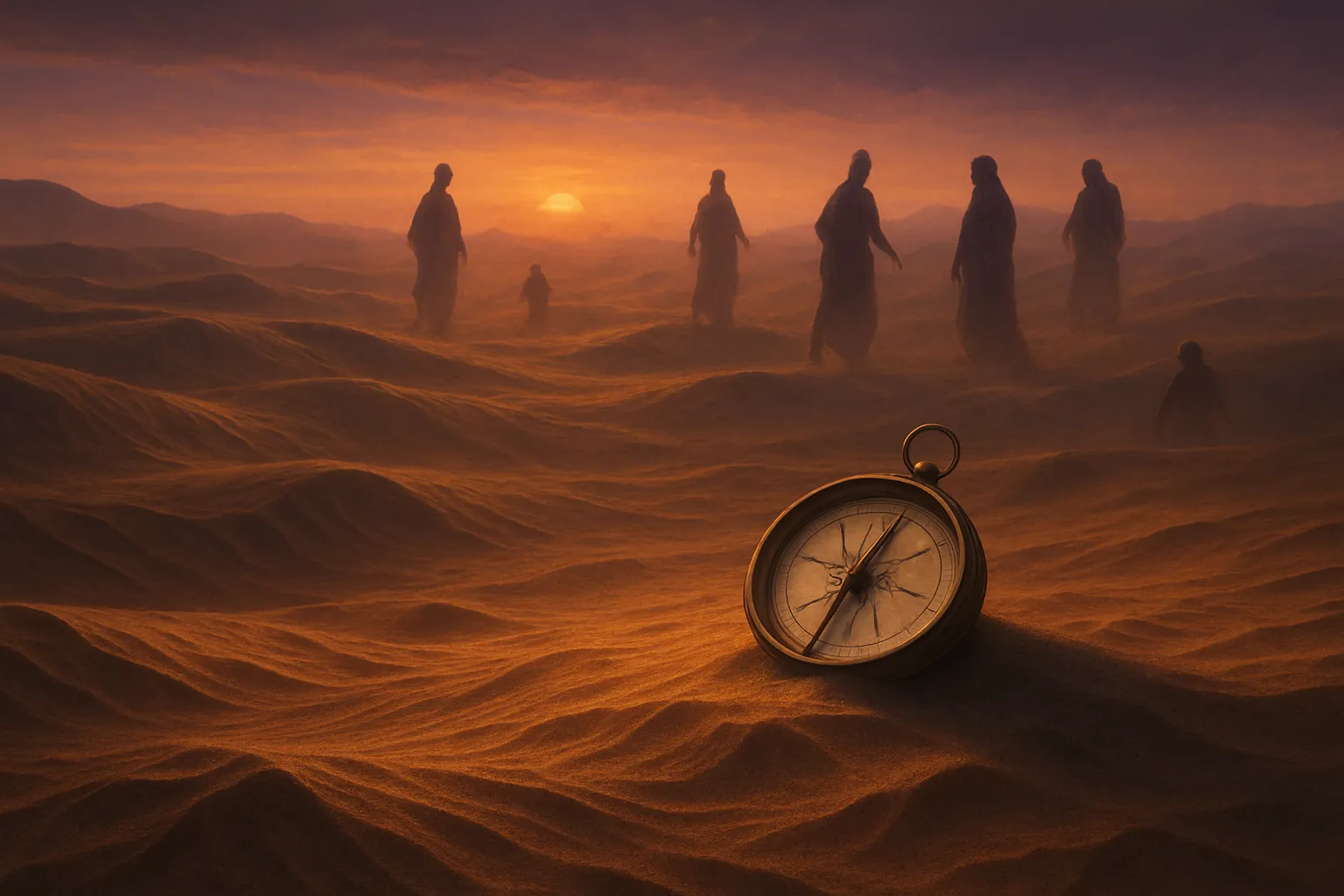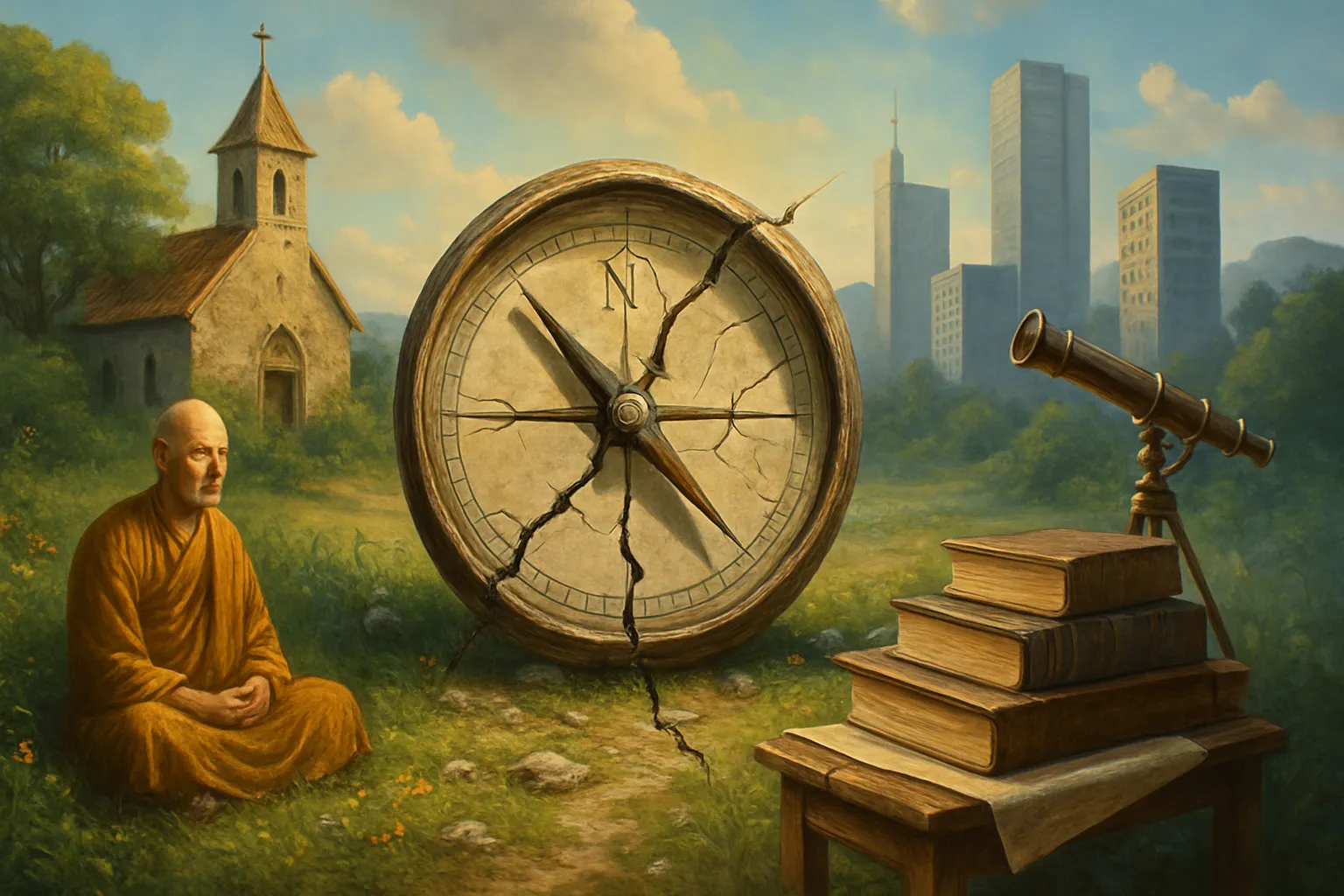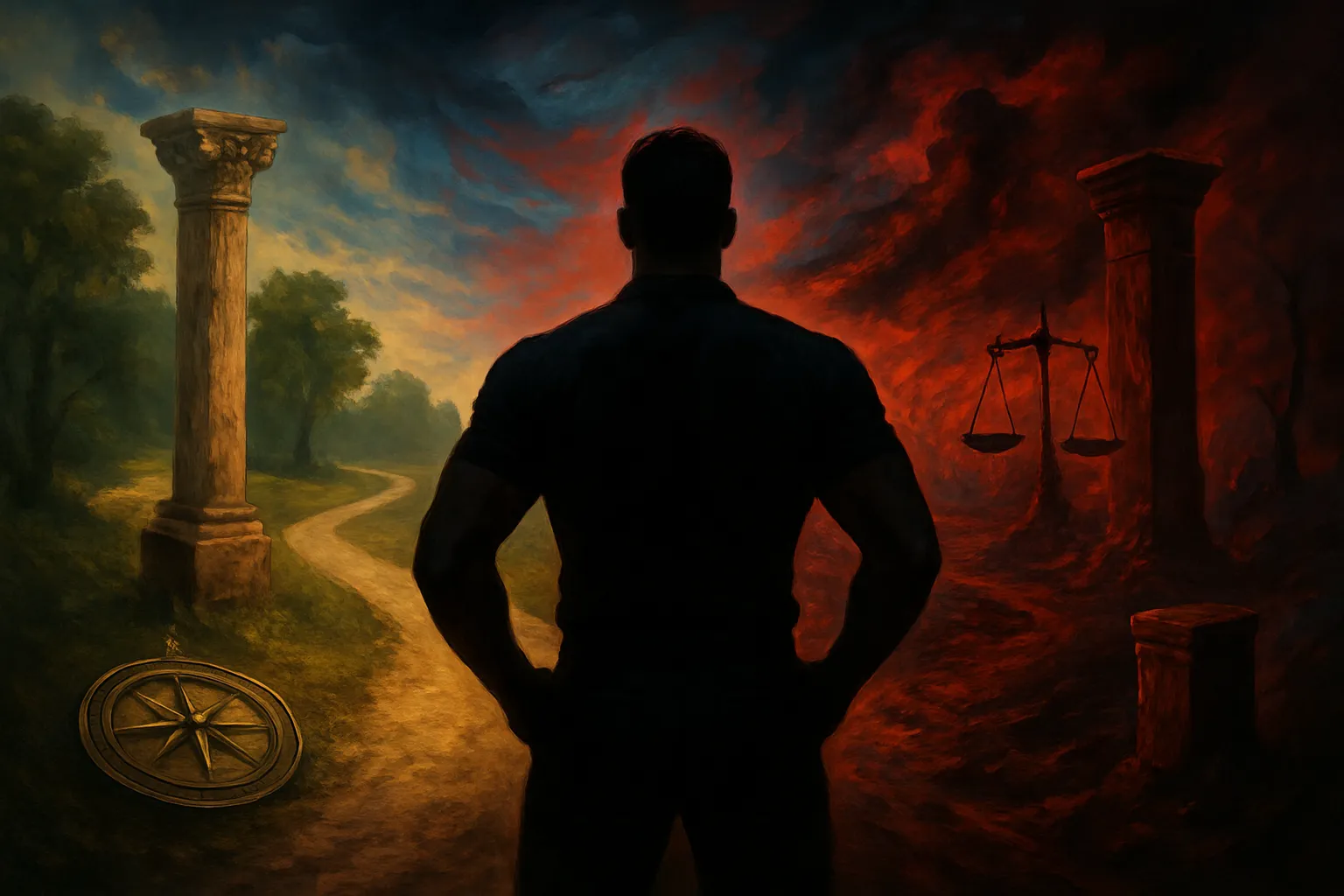The first time I heard someone blurt out, 'You can’t show emotions—that’s weak,' I laughed. Not because it was funny, but because it hit too close. As a kid, I once cried watching a cartoon character face heartbreak. Some cousins teased me, insisting real men just deal with it. Now, scrolling through forums, Red Pill memes, and endless debates, I realize that 'laugh it off' attitude is everywhere, and it bleeds into bigger questions: what is 'right' and who decides it? Let's dive in, flaws and all, because this isn't a neat or simple journey.
Red Pill and the Paradox of Emotion: Rejecting Vulnerability, Seeking Certainty
Red Pill ideology is often described as a direct reaction to modern feminism—a kind of counter-movement that critiques what its followers see as the “feminization” of men. In Red Pill forums and communities, there is a strong push for stoicism, emotional armor, and a hardline approach to masculinity. The message is clear: to be a man is to be unbreakable, unaffected, and above all, never vulnerable. Yet, beneath this surface, I see a paradox—everyone, even the most stoic, aches to be understood.
I’ve watched this dynamic play out firsthand. My friend Rob once tried to open up about heartbreak in a Red Pill online space. Instead of support, he was met with memes and comments mocking him for being “weak.” This isn’t unusual. In these communities, emotional expression—especially anything that hints at vulnerability—is often labeled as “gay” or unmanly. As one Red Pill critic put it,
“They’re not allowed to say they fall in love because then the red pill guys who are all angry are gonna be like, that’s gay to fall in love.”
This pressure to suppress vulnerability is central to Red Pill masculinity. The community penalizes men for expressing love, sadness, or even confusion. Leaders in the Red Pill space rarely admit to personal struggles or emotional moments. The expectation is to always appear in control, never admitting to pain or uncertainty. This is seen as a necessary defense against a world they believe has been tilted by feminism and shifting gender roles.
But the cost of this emotional suppression is steep. Many young men drawn to Red Pill ideology are already struggling with feelings of isolation, resentment, or insecurity. Instead of finding a space to process these emotions, they are encouraged to bury them deeper. The result is often more anger and alienation. The Red Pill community’s critique of feminism is rooted in the belief that traditional masculinity is under attack, but their solution—total emotional shutdown—can breed even more insecurity.
There’s a kind of moral certainty that the Red Pill community seeks. They want clear rules about what it means to be a man, and they reject anything that threatens that clarity. Vulnerability, in their view, is not just dangerous—it’s a betrayal of what they see as true masculinity. Yet, this certainty is built on shaky ground. The insistence on emotional suppression doesn’t erase the basic human need for connection and understanding. Instead, it often leads to cycles of resentment and confusion about what is actually right or wrong.
- Red Pill forums tout stoicism and emotional armor, but everyone aches to be understood.
- Attempts at vulnerability are often met with ridicule and accusations of weakness.
- The push for hardline masculinity may shield men from vulnerability—but at a steep cost.
In the end, Red Pill ideology’s approach to masculinity pressures men to reject vulnerability in pursuit of certainty, but it leaves many struggling with unspoken emotions and unresolved questions about what it truly means to be a man.

Shifting Sands: How Moral Judgments Change Based on Perspective
When I think about Moral Judgments Subjectivity, I’m reminded of how quickly opinions can shift depending on where you stand. Take global conflicts, for example. The way the world responded to Putin’s actions in Ukraine is a clear case. Many people immediately labeled it as morally unacceptable, but if you look closer, you’ll see that not everyone agreed. Some saw him as a villain, while others, depending on their background or information sources, viewed him as a strong leader defending his nation’s interests. This makes me ask,
“What determines what is right and what is wrong?”
This question came up a lot during my time on the college debate team. We often tackled topics like “just wars,” and it was fascinating to watch how quickly people’s stances changed. Halfway through an argument, someone would hear a new perspective and suddenly flip their opinion. There was never a clear, shared sense of moral ground. This experience taught me that Defining Right and Wrong is rarely straightforward. It’s shaped by the arguments we hear, the culture we come from, and the pressure to fit in with our peers.
In the context of Morality in Global Conflicts, these shifting sands become even more obvious. Leaders are judged differently based on who is doing the judging. For some, a leader’s actions are heroic; for others, those same actions are unforgivable. The same event can be seen as liberation or invasion, depending on which side of the border you’re on. There’s rarely a global consensus, and what’s considered “right” or “wrong” can change overnight.
Social media has made this even more visible. Outrage cycles move fast. One day, a public figure is celebrated; the next, they’re condemned. I’ve seen hashtags trend worldwide, labeling someone as a villain, only for the narrative to flip when new information comes out. It’s a reminder that Moral Judgments Subjectivity is not just an academic idea—it’s something we live every day.
There’s also the question of Cultural Pressures on Masculinity. What’s considered acceptable behavior for men can change depending on the culture, the moment, or even the platform. Sometimes, actions that are praised in one group are criticized in another. This makes it hard to find a fixed sense of moral direction, especially when society’s standards are always shifting.
- One person’s villain is another’s hero—especially in global conflicts.
- Debates about morality often end with no clear agreement.
- Social media outrage shows how quickly moral labels can change.
Ultimately, the search for moral ground is complicated by the fact that our judgments are shaped by perspective, context, and the ever-changing standards of society. As I reflect on these experiences, I see that the line between right and wrong is rarely as clear as we’d like it to be.

Lost Compasses: When Faith and Atheism Differ on Defining Right and Wrong
In my own conversations with both atheist and religious friends, I’ve noticed that even the most basic questions about what’s “right” and “wrong” can send everyone into a tailspin. It’s not just a matter of opinion—these debates often reveal how deeply our moral compasses are shaped by the frameworks we trust, or the lack thereof. The search for a stable ground in defining right and wrong is at the heart of many heated discussions, both in private circles and in public debates led by figures like Pierce Morgan.
Conflicting Moral Views Among Atheists
One thing that stands out in these conversations is the Atheist Moral Framework. Many of my atheist peers argue that morality is a kind of social contract—a set of rules we agree on as a society to keep things running smoothly. But as soon as someone disagrees, the whole system seems to fall apart. For example, I might hear Suzanne, an atheist, say, “This is morally unacceptable.” But then Bob, also an atheist, will jump in and say, “No, Suzanne’s wrong.” There’s no external authority to settle the debate, so it turns into endless back-and-forth.
“You don’t have an external entity that has given you rules and regulations. Whatever view you come out with, someone’s going to counter that and we’re going to be there all day long.”
This lack of a unified moral code leads to Conflicting Moral Views Atheists often experience. Without a clear, agreed-upon standard, every moral claim is open to challenge. The result? Ongoing disagreement and debate, with no final answer in sight.
Quranic Guidance on Morality: An Absolute Standard?
On the other side, some of my religious friends point to external sources—like the Quran—as the only stable foundation for morality. For them, Quranic Guidance on Morality is not just helpful; it’s essential. They argue that without an external, absolute source, morality becomes subjective and unstable. As one friend put it, “There’s no answer besides the Quran.” This belief is echoed in many religious frameworks, which position themselves as providing the only reliable guidance for defining right and wrong.
- Religious frameworks claim absolute standards for morality.
- Atheist frameworks often rely on consensus, which can change and conflict.
- Public figures like Pierce Morgan highlight the confusion in moral debates when there’s no agreed-upon source.
Endless Debates Without a Common Ground
The debate between atheism and belief often comes down to this: there’s no agreed standard for what is right or wrong. Some say only external sources, like the Quran, offer a stable foundation. Others rely on reason, empathy, or social contracts, but these can quickly become fragmented. As a result, defining right and wrong becomes a never-ending conversation, with each side spinning in circles and no one able to draw a clear line.

WILD CARD: The 'Manual' We All Wish We Had
Imagine if, in every difficult moment, a pop-up manual appeared—something like, “Turn to page 54 for break-up etiquette,” or “Page 112: How to handle betrayal.” It’s a comforting thought, especially when we’re wrestling with questions of right and wrong. But the reality is far less tidy. There’s no universal manual for life’s toughest calls, and even the best guides—whether cultural, philosophical, or religious—leave us with more questions than answers. This absence of a shared moral framework is at the heart of why debates about masculinity, the red pill movement, and morality itself become so heated and confusing.
In my earlier discussion, I pointed out that the search for an ideal ideology—especially in reaction to feminism—often leads to rigid communities like the red pill space. Here, vulnerability is seen as weakness, and expressing emotions like love is dismissed as “unmanly” or even “gay.” This isn’t just about gender roles; it’s about the pressure to conform to a set of unwritten rules that claim to define what is right and wrong for men. Yet, when you look closer, these rules are not only harsh but also inconsistent. What’s celebrated as strength in one moment is condemned as weakness in another. The supposed manual is full of contradictions.
This confusion isn’t limited to masculinity. It runs through all of society. When we try to define what’s right and wrong, we quickly realize that people’s judgments are shaped by context, culture, and personal experience. I used the example of global conflicts—how one leader’s actions are condemned while another’s similar actions are justified. The line between moral and immoral shifts depending on who’s drawing it. This shows just how subjective our moral judgments can be, and how easily they can be influenced by emotion, loyalty, or circumstance.
Without a universally agreed-upon moral manual, we’re left to invent our own rules or borrow them from whatever source feels most convincing. For some, that’s religion; for others, it’s philosophy or personal experience. But even among people who reject religion, there’s no consensus. I mentioned Suzanne and Bob, two atheists who can’t agree on what’s morally unacceptable. Their debates highlight the lack of a unified moral framework. When everyone has their own compass, defining right and wrong becomes a never-ending argument.
Public figures like Pierce Morgan often reflect this confusion. In debates, he seems lost, relying on what feels “proportionate” or “reasonable” in the moment. But without a clear set of rules—a true manual—these judgments are always open to challenge. Every opinion can be countered, every stance can be questioned. This endless back-and-forth is the result of not having an external, absolute source to settle the matter.
In the end, the absence of a shared manual for morality means we’re all navigating in the dark, hoping our instincts or chosen guides will lead us somewhere good. The search for a clear moral framework—one that can reliably define right and wrong—is ongoing. Until we find it, if we ever do, the debates will continue, and the lines will keep blurring.
TL;DR: Ultimately, searching for clear moral answers in the swirling worlds of Red Pill ideology and modern masculinity leads to more questions than conclusions. Whether rooted in faith, philosophy, or just gut instinct, the line between right and wrong is messy—and that's okay.



